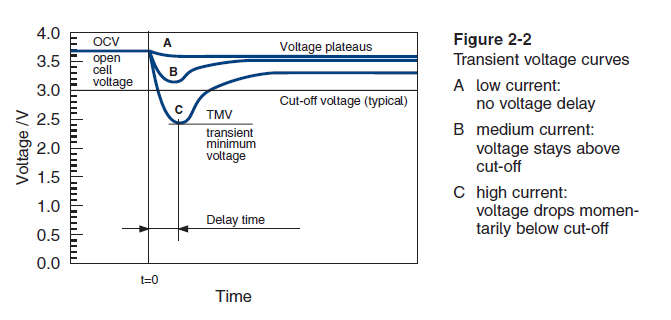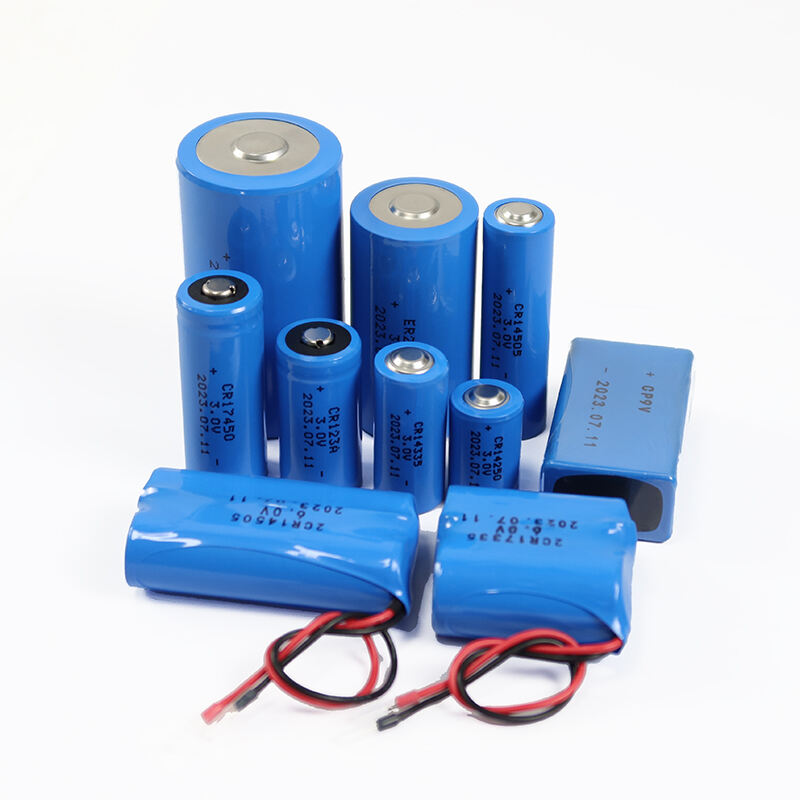Hírek
Utasítások és óvintézkedések a lítium-tionil-klorid akkumulátorok használatához
Az ER-vel kezdődő modellszámú lítium akkumulátorok lítium-tionil-klorid (Li/SOCl2) akkumulátorok, amelyek a nemzetközi akkumulátor-szabványok szerint lítium-primer akkumulátorok közé tartoznak. A lítium primer akkumulátorok új típusú, nagy energiájú és környezetbarát akkumulátorok, amelyek negatív elektródája a lítium fém. Ezek nem újratölthető akkumulátorok.
1. A lítium primer akkumulátorok nem tölthetők újra
A lítium primer akkumulátorok közvetlen töltése az akkumulátor felrobbanását okozza. Az akkumulátor felrobbanásának valószínűsége közvetlenül összefügg a töltési idővel és az áramerősséggel. A 220 V-os töltés azonnal felrobban. 12V DC töltés esetén az akkumulátor néhány percen belül felrobban. Az 5V-os DC töltés külső védőelemek nélkül körülbelül 50mA töltőáramot érhet el, és az akkumulátor néhány óra múlva felrobban.
Ha az áramkörben 5 V feszültségű lebegő töltés van, ajánlatos az ügyfeleknek diódákat és egyéb védelmi intézkedéseket helyezni az áramkörbe, hogy a töltőáramot 10 µA alá csökkentsék.
A lítium primer akkumulátorok töltőáramának szabályozása 10 µA alatt biztonságos.
2. Akadályozza meg a kényszerű kisülést
Ha több akkumulátort használnak sorba, ha más modelleket vagy használt akkumulátorokat használnak a sorozatban, egyes akkumulátorok kényszerkisülést (OverDischarge) tapasztalhatnak. Az akkumulátor kapacitásának egyenetlensége miatt egyes akkumulátorok a lemerülés későbbi szakaszában töltődnek fel, ami akkumulátorbaleseteket okozhat.
A töltés elkerülése érdekében a vásárlóknak azt tanácsoljuk, hogy ne szereljék össze az akkumulátorokat használathoz.
Ha egyetlen akkumulátort szeretne kombinálni, vegye fel a kapcsolatot a technikusokkal, akik szerelési megoldásokat és összeszerelési tervezési szolgáltatásokat nyújtanak Önnek.
3. Magas hőmérséklet
Amikor a lítium primer akkumulátor környezeti hőmérséklete meghaladja a 100°C-ot, az akkumulátor felrobban, ezért ügyeljen a hegesztési idő és hőmérséklet szabályozására a hegesztés során.
4. Hiszterézis és figyelempontok
Mint lítium-tionil-klorid akkumulátorok jellemzőjük, azaz feszültség hiszterézisük van, ami miatt az ügyfelek gyakran az akkumulátort használják nagy áramellátásra, és a terhelési feszültség alacsonyabb, mint az ügyfél minimális határfeszültsége, ami miatt a berendezés rosszul működik. Tekintettel arra, hogy sok vásárló ezt alábecsüli, szükséges, hogy részletesen elmagyarázzuk az akkumulátor hiszterézis teljesítményét.

A osztály: Alacsony áramköri körülmények között, bár az akkumulátor passzivált, a terhelés nem változik jelentősen használat közben. Ha például az ER14250-et vesszük, ha az áram 1 mA alatt van, az akkumulátornak nem lesz nyilvánvaló hiszterézise (feszültségcsökkenés).
B kategória: Közepes áramkörülmények között, ha az akkumulátor passziválva van, de az akkumulátor terhelése továbbra is a lekapcsolási feszültség felett tartható.
Ha például az ER14250 akkumulátort vesszük, amikor az áram 4 mA alatt van, a passzivált akkumulátor feszültsége csökken, de általában nem csökken 2,8 V alá.
C kategória: Nagy áramköri körülmények között, ha az akkumulátor passziválva van, az akkumulátor terhelése könnyen a lekapcsolási feszültség alá süllyedhet, ami miatt a készülék nem működik megfelelően. Példaként az ER14250 akkumulátort vesszük, amikor az áram meghaladja a 10 mA-t. Passziválás esetén a terhelés a lekapcsolási feszültség (Cut-offVoltage) alá csökken.
Ezért az ügyfeleknek teljes mértékben meg kell érteniük a hiszterézis jelenségét, és meg kell tenniük a megfelelő intézkedéseket a hiszterézis hatásának csökkentése érdekében. A tényleges használat során a következő javaslatok születnek:
1. A tervezési szakaszban vegye figyelembe a terhelés méretét, a használati környezetet és egyéb tényezőket, és válasszon akkumulátormodellt közepes vagy alacsony áramköri feltételekhez.
2. Az akkumulátor kész leltári ideje nem haladhatja meg a fél évet. Több mint fél év elteltével ajánlatos az akkumulátort aktiválni.
3. Ha az akkumulátor be van helyezve a készülékbe, és mikroamperes fogyasztású, az akkumulátor passziválási jelenség lelassul. Ha azonban a tervezési áram nagyobb, mint az akkumulátor maximális üzemi árama, ajánlatos megfontolni a kondenzátorok hozzáadását a tervezési szakaszban az akkumulátor feszültségesésének csökkentése érdekében.

V. Óvintézkedések a használat során
1. A rövidzárlat szigorúan tilos, a nagyáramú töltés pedig szigorúan tilos.
2. A felhasználóknak szigorúan tilos az elemeket önállóan kombinálni.
3. Szigorúan tilos az akkumulátorokat túlságosan kisütni, összenyomni és elégetni.
4. A megengedett hőmérsékleti tartományon kívüli tartós használat vagy fűtés szigorúan tilos (100°C feletti hőmérséklet esetén az akkumulátorok biztonsági kockázatot jelentenek).
5. Használat előtt szigorúan ellenőrizze a külső csomagolást. Ha a csomagolás sérült, derítse ki az okot, és ne használja könnyen. Ha a becsomagolt akkumulátorok szétszóródtak, időben válogassa ki, zárja le a szétszóródott akkumulátorokat és értesítse a szállítót.
6. Szigorúan tilos a különböző sorozatú és eltérő specifikációjú akkumulátorok sorozatban történő keverése és használata.
7. Az akkumulátor pozitív és negatív pólusának tetején tetszőlegesen nem lehet forrasztást végezni, a kivezető lapon a forrasztást 5 másodpercen belül be kell fejezni.
8. Működés közben az akkumulátort nem szabad szétszórni vagy leejteni, hogy elkerüljük az akkumulátor rövidzárlatát.
9. Az akkumulátor lezárási feszültségre való lemerülése után szigorúan tilos tovább használni, és az akkumulátort nem szabad vízbe áztatni.
10. A használt elemeket időben meg kell jelölni és le kell selejtezni, és nem szabad véletlenszerűen tárolni.
11. A vezetékek csupaszítása és hegesztése során ne csupaszítsa le egyszerre a pozitív és negatív vezetékeket, és ne kösse össze a pozitív és negatív vezetékeket fémtárgyakkal, hogy elkerülje az akkumulátor rövidzárlatát.
12. A gyártósorról származó felesleges akkumulátorok csomagolása és tárolása során az akkumulátorokat az eredeti csomagolásba kell csomagolni, gondosan elhelyezve, és nem zárják rövidre egymást.
13. A gyártósorról származó felesleges akkumulátorokat az eredeti csomagolásban kell tárolni. Javasoljuk, hogy az akkumulátort <25 fokos hőmérsékletű és <70% páratartalmú környezetben tárolja, hogy elkerülje a hosszú távú, zord környezetben történő tárolást, amely rozsdásodását és korrózióját okozhatja az akkumulátorban, és szivárgást okozhat.
14. Az akkumulátor beszerelésének és használatának követelményei: Az akkumulátorcella pozitív pólusát vízszintesen és felfelé kell elhelyezni. Ha a pozitív pólus lefelé van, a kapacitás egy része használhatatlan lesz, és a tényleges kihasználtság csak a normál érték 80%-a.
15. A sérülések elkerülése érdekében tartsa távol az akkumulátort gyermekektől.
16. A kiselejtezett akkumulátorokat önmagukban nem lehet megsemmisíteni, és a helyi környezetvédelmi osztály előírásai szerint kell kezelni.
A fentiek a lítium-primer akkumulátorok használatára és működésére vonatkozó óvintézkedések, amelyeket itt ismertetünk.


